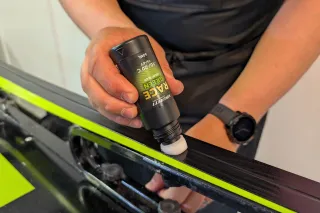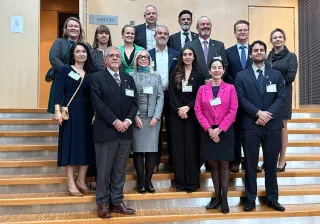Polyols are specialty chemicals currently made from fossil raw materials and used, among other applications, in the manufacture of polyurethane. VTT and its business partners are developing a way to produce climate-friendly polyol products from recovered bio-based carbon dioxide and hydrogen.
In the BECCU project funded by Business Finland, VTT and a large number of Finnish companies are jointly developing a manufacturing process that can be used to recover carbon dioxide generated in bioenergy production and use it as a raw material for specialty chemicals, particularly polyols.
If the two-year BECCU project launched at the beginning of 2020 achieves its goal, the production of polyurethane from climate-friendly polyols will be possible in the future. Polyurethane is used in the construction industry, adhesives and many everyday products.
– Our profitability calculations look promising, and after the project, we aim to continue the development with our business partners by piloting the process and production. We strongly believe that this technology can be commercialised, says Research Professor Juha Lehtonen from VTT, responsible for leading the BECCU project.
From polyols to raw-materials for polyurethanes
– The production of bioenergy generates carbon dioxide when industry side-streams are combusted or liquid biofuels or biomethane are produced. In our concept, carbon dioxide is recovered and purified from bio-based industrial emissions. In addition to carbon dioxide, hydrogen is needed. It is either produced via electrolysis with the help of renewable electricity or by using certain by-product streams. Carbon dioxide and hydrogen ultimately form polyols through a multi-stage chemical process, says Lehtonen.
– Polyols are the main product studied in our project. They serve as raw material for polyurethanes, which are widely used in various construction products, such as insulation materials. Polyurethanes are also used in adhesives, everyday products such as shoes and many car parts.
Towards carbon neutrality
Polyol products already exist on a small commercial scale, but only about 30% of their carbon comes from carbon dioxide. The remaining raw materials are fossil-based.
– Our project is unique in that sense that all the carbon of the polyol comes from recovered carbon dioxide, Lehtonen emphasises.
As the recovered carbon dioxide is derived from bio-based emissions and various end-products made from polyurethane have a long life-cycle, at best this manufacturing concept allows us to capture and bind carbon dioxide for decades that would otherwise be released to air.
Finnfoam invests in environmentally friendly insulation materials
Finnfoam, a manufacturer of thermal insulation products, is one of the companies participating in the BECCU project. Located in Salo, the company is an established expert in the recycling of carbon dioxide.
– Finnfoam has always been involved in developing more environmentally friendly ways of building society. In 1999, we were the first in the world to use 100% recycled carbon dioxide throughout our production. We are also involved in Kleener Power Solutions Oy, which is developing an environmentally friendly way to recover carbon dioxide directly from power plant chimneys. The use of carbon dioxide as raw material for plastics is thus an extension of the development efforts we have made for the environment over the past 20 years, says Henri Nieminen, Managing Director of Finnfoam.
– We already have a great deal of expertise in the production of polyols using both plastic and bio-based waste as raw material. We do not have the competence to use carbon dioxide as raw material for polyols yet, but we soon will, Nieminen says.
Henri Nieminen, Managing Director of Finnfoam

Thermal insulation saves energy
The share of polyurethane-based products in Finnfoam’s production is increasing. The company’s chemists have been developing the fire-retadant properties of PU products for many years.
– Polyisocyanurate (PIR) has started to become more widely used in PU insulations. The benefits of PIR insulation include good thermal insulation capacity and fire safety, as PIR insulation does not burn by itself, but carbonises into a foam that continues to insulate heat. PIR insulation can easily last for 500 years in the structures.
Today’s consumers are already capable of demanding climate-friendly thermal insulation. Instead of green washing, the focus is now on real environmental achievements.
– The cleanest and most environmentally friendly form of energy is saved energy. Thermal insulation products save the largest amount of energy in the world, so choosing to install twice as much insulation is a much bigger contribution to the environment than focusing on different types of thermal insulation, says Nieminen.
New types of biomaterials
Companies involved in the BECCU project also work on their own parallel projects.
– Our project develops thermoplastically ductile biomaterials similar to plastics. Their raw material is food ingredients that cannot be used by human or animal bodies. No fields need to be removed from food production because of these environmentally friendly biomaterials, says Nieminen.





